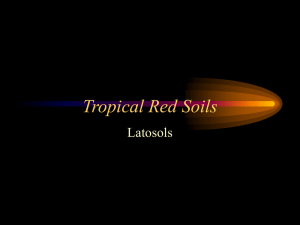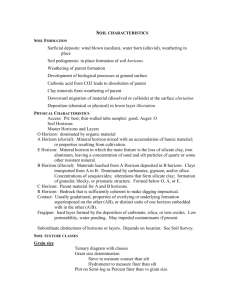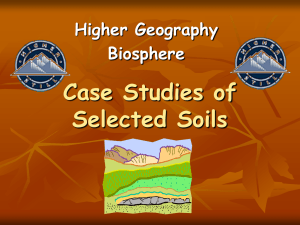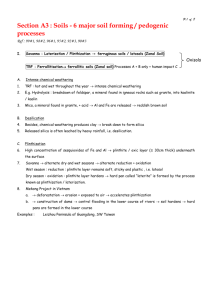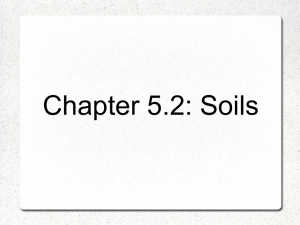Classification of Soils
advertisement
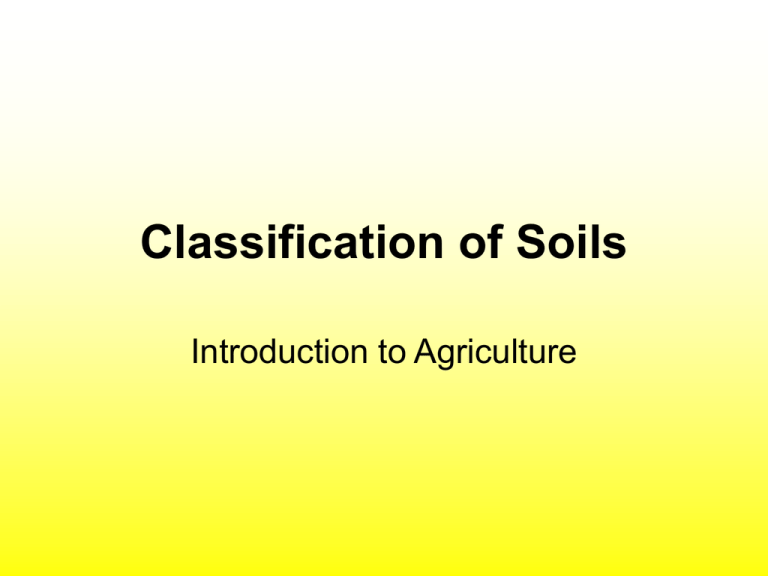
Classification of Soils Introduction to Agriculture What will we learn today? How do we classify soils? What is a soil profile? What is a land capability class? What is the Soil Classification System? Soil Profile A soil profile is a crosssectional view of a soil showing its many layers Each layer in the soil is called a horizon Shows many characteristics of each layer: Thickness Color Texture Structure Soil Horizons A Horizon – TOPSOIL 1” to 3’ deep depending on region Rich in humus, soil organisms, plant roots B Horizon – SUBSOIL Fine particles of clay, little organic matter Water drainage and root penetration C Horizon – PARENT MATERIAL Not true soil, weathered parent material QuickTime™ and a TIFF (Uncompressed) decompressor are needed to see this picture. Quic kTime™ and a TIFF ( Unc ompres sed) dec ompr ess or are needed to s ee this pic tur e. Other Horizons O Horizon ORGANIC MATTER Plant or animal life Organic plant residues Decomposers R Horizon BEDROCK 1’ to 1,000’+ QuickTime™ and a TIFF (Uncompressed) decompressor are needed to see this picture. Land Capability Class Land capability class is productive potential of soil based on: texture, structure, slope and depth Class I best for agricultural production Class VIII least useful for agriculture Land Capability Class Class 1 = Few limitations that restrict their use. Best for agriculture. Class 2 = Moderate limitations that reduce the choice of plants or that require moderate conservation practices. Class 3 = Severe limitations reducing choice of plants or requiring very careful management or both. Class 4 = Very severe limitations reducing the choice of plants or requiring very careful management or both. Class 5 = Not likely to erode but have other limitations, impractical to remove, that limit their use. Class 6 = Severe limitations that making them generally unsuitable for cultivation. Class 7 = Very severe limitations making them unavailable for cultivation. Class 8 = Suitable only for wildlife, forests, and recreation. Subclasses indicate major limitations within a class. Class I has no subclasses. Subclass E = Risk of erosion unless close-growing plant cover is maintained. Subclass W = Water in or on the soil interferes with plant growth or cultivation Subclass S = Shallow, droughty, or stone. Soil Classification System (SCS) Developed by USDA to categorize the different types of soils that exist All soils broken into 12 orders, then broken down further ending with series About 10,500 known in the United States alone Similar to binomial nomenclature used with plants, animals, etc. Soil Classification System (SCS) Living Soils Organisms Kingdom Order Phylum Suborder Class Great Group Order Subgroup Family Family Genus Series Species Phase What did we learn today? How do we classify soils? What is a soil profile? What is a land capability class? What is the Soil Classification System?







